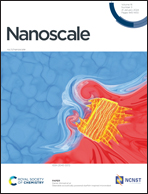Recent advances of pure/independent covalent organic framework membrane materials: preparation, properties and separation applications
Abstract
Covalent organic frameworks (COF) are porous crystalline polymers connected by covalent bonds. Due to their inherent high specific surface area, tunable pore size, and good stability, they have attracted extensive attention from researchers. In recent years, COF membrane materials developed rapidly, and a large amount of research work has been presented on the preparation methods, properties, and applications of COF membranes. This review focuses on the research on independent/pure continuous COF membranes. First, based on the membrane formation mechanism, COF membrane preparation methods are categorized into two main groups: bottom-up and top-down. Four methods are presented, namely, solvothermal, interfacial polymerization, steam-assisted conversion, and layer by layer. Then, the aperture, hydrophilicity/hydrophobicity and surface charge properties of COF membranes are summarized and outlined. According to the application directions of gas separation, water treatment, organic solvent nanofiltration, pervaporation and energy, the latest research results of COF membranes are presented. Finally, the challenges and future directions of COF membranes are summarized and an outlook provided. It is hoped that this work will inspire and motivate researchers in related fields.

- This article is part of the themed collections: Recent Review Articles and Nanoscale 2024 Emerging Investigators


 Please wait while we load your content...
Please wait while we load your content...